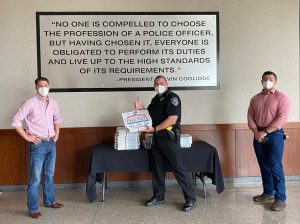Oklahoma City-based Chesapeake Energy Inc. (NYSE: CHK) and 40 affiliates filed for Chapter 11 bankruptcy protection June 28.
The filing, in the U.S. Bankruptcy Court for the Southern District of Texas Houston Division, caps a long period of decline for the driller that saw it rack up billions of dollars in debt. It reported total debt of nearly $11.8 billion and assets of nearly $16.2 billion as of Dec. 31, 2019.
The long-expected filing came with a restructuring agreement with its lenders that included $925 million in debtor-in-possession financing, enough to keep Chesapeake’s operations going during the restructuring. There’s also agreements for a $1.75 billion revolving credit facility and $750 million term loan for exit financing.
“We are fundamentally resetting Chesapeake’s capital structure and business to address our legacy financial weaknesses and capitalize on our substantial operational strengths,” President and CEO Doug Lawler said in a press release.
The biggest creditor is Deutsche Bank Trust Co., accounting for eight of the 10 biggest claims totaling nearly $3 billion, including $1.1 billion in convertible senior notes due 2026 that is the largest single claim.
Bank of New York Mellon Trust Co. has three of the top-12 claims, all senior notes due between 2020 and 2021. They total $416.4 million, according to the filing. Several energy companies with headquarters or significant operations in the Houston area are among the top 25 creditors, including Halliburton Energy Services Inc. ($21,104,132), Williams Companies Inc. ($13,854,145), Enterprise Crude Oil LLC ($6,469,804), Hi-Crush Partners LP ($4,071,065), Baker Hughes ($3,586,155), Schlumberger Technology Corp. ($2,630,025), B&L Pipeco Services Inc. ($2,354,421), Patterson-UTI Drilling Company LLC ($2,282,158) and DNow LP ($2,154,723), all trade-related debt. Hi-Crush, now known as Hi-Crush Inc., is itself also planning to file for bankruptcy protection in the near future.
Chesapeake had 1,201 active wells and about 538,000 acres that produced about 980 million cubic feet of natural gas in the fourth quarter of 2019, according to a company presentation.
Chesapeake said that it had filed motions for first-day relief that would allow it to pay owner royalties as well as employee wages and benefits. The company ended 2019 with 2,300 employees and reported total revenue of nearly $8.6 billion, down about 14% year over year, but that translated to a $416 million net loss available to common shareholders, down from $133 million in net income in 2018. So far this year, the company has laid off at least 200 people in Oklahoma, according to Reuters.
By Paul J. Gough – Reporter, Pittsburgh Business Times
Olivia Pulsinelli with the Houston Business Journal contributed to this report.
Courtesy of The Houston Business Journal
https://www.bizjournals.com/houston/news/2020/06/29/chesapeake-energy-bankruptcy.html








